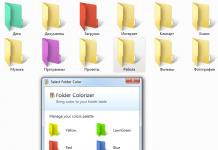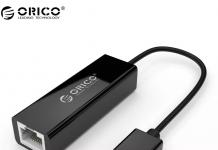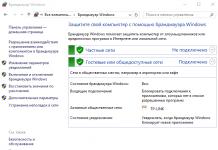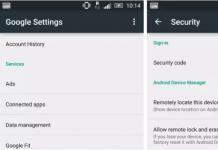Monitor testing programs have consistently attracted the attention of PC users. Perhaps, among all information and diagnostic utilities, they are the most popular. And all because every user will sooner or later take care of buying a new monitor. Just choosing the manufacturer and model is not enough. According to the rules, when buying a monitor, it is necessary to meticulously test it, especially for broken pixels.
Why do we test the monitor:
Monitor test programs make it easy to test and set up a CRT monitor. Special test images (patterns) make it possible to detect such defects as the lack of convergence of rays for different colors, insufficient focusing and voltage stabilization, geometry distortion, low contrast, uneven luminescence of the phosphor, dead pixels. standards are minimal.
LCD monitors require a different approach. All monitors based on the LCD panel cannot have problems with geometry, convergence, stabilization, focus, etc. And the scatter of parameters, in general, is not typical for them, with the exception of "broken" pixels, which are still found, despite the best efforts of manufacturers. However, LCD monitors should also be tested. Only not different instances, but models from different manufacturers. LCD monitors differ significantly from each other in such parameters as viewing angles, inertia (afterglow and "blurring"), natural color reproduction, color resolution, brightness and contrast, backlight uniformity. These parameters are either not indicated in the characteristics at all, or are measured using completely inconsistent methods.
| IsMyLcdOK- universal and portable utility. With the help of it, we will check how many dead pixels are on the liquid crystal tft lcd led monitor. At the first start, a detailed color selection menu will open for us and you will immediately be shown what keys are responsible for.. | |
| Nokia Monitor Test version 2.0- a set of tests necessary to test the operation of TFT, CRT monitors. The utility contains the necessary templates for checking geometry, information, resolution, moiré, contrast, brightness, focus, text readability, color reproduction. | |
| TFT Monitor test 1.52- a program with this name was developed by domestic programmers. Unlike existing analogues, it is, firstly, completely free, and secondly, it is provided with detailed help describing the available templates in Russian and tips on solving typical problems. The program consists of one file (plus an optional help file), does not require installation, in the unpacked state it takes only 650 Kb! | |
| Dead Pixel Tester 3.0- a program for finding the so-called "broken pixels" on your screen. Pretty clear simple interface (though in English). | |
| CheckeMON 1.1- a small utility for testing monitors. Does not require installation and is absolutely free. CheckeMON is implemented as a window with links to various tests: gradients, geometry, color spectrum, etc. There are 11 of them in total, when hovering over each one, a tooltip with a description of the test appears below. And if you know a little English, then it will not be difficult for you to understand what's what. | |
| EIZO Monitortest 1.6- interface in English, Russian is missing, but German and Czech are supported. It has a simple interface and includes twenty-four tests, each of which has a brief description. Tests, for example, are: geometry, brightness clarity, brightness, contrast, moiré, inertness, etc., accompanied by brief tips. | |
| PixPerAn 1.011e- an interesting utility for testing monitors, but, unlike others, it offers to check the operation of the screen when changing images. Using PixPerAn, you can identify flaws that may appear due to the inertness of LCD matrices (for example, when viewing a dynamic image, nasty multi-colored loops may remain on the screen). Includes original tests, for example, in the form of a small computer game, moving hand-drawn typewriters, moving text readability test, etc. Movement speed and color are customizable. Plus, PixPerAn provides information about frame rate per second, dropped frames, CPU usage, and screen settings. |
Accepting applications from 8:00 to 23:00
A bit about dead pixels!
Often in LCD, LED and even OLED TVs there are defects such as Dead pixel.
It usually looks like a dot in an arbitrary area of the screen, of any color.
There are 4 types of "Broken pixels":
*Dead pixels are pixels that are not lit (always off). On a white background, it looks like a black dot.
*Hot pixels- on the contrary, they are always on and on a black background they look like a white dot.
*Stuck pixels can glow red, blue, green or yellow. This is because some of the subpixels are always on or always off.
*Group of defective pixels is a few defective pixels in a 5x5 pixel square.
(click on image for larger view)
Many stores offer a TV screen test for a fee. Of course, this procedure will provide you with a more comfortable viewing of TV programs. But not many people prefer to overpay for something that is easy to produce on their own.
Checking with a USB flash drive
Using the image data, you can check your TV for factory defects such as:
- defective pixels;
- matrix highlights;
- backlight unevenness;
![]()
![]()
![]()
![]()
![]()
Copy these images to a USB drive and plug it into your TV's USB port.

Scroll through all the pictures using the built-in media player - it will be much easier to notice the matrix defect!
If there is a dead pixel, you will definitely see it as a black, white or colored dot in any area of the screen.
Checking with a laptop
You can also use a special program to test the screen of a TV or monitor
To do this, you need to connect the TV to a computer or laptop using an HDMI cable and run the program.

This program allows you to evaluate not only the presence or absence of broken pixels on the display, but also the uniformity of the matrix illumination, geometric distortions and the response time of the matrix.
You can download the program for checking the TV screen for broken pixels at the link: DOWNLOAD
Checking with a Professional
You can call the wizard to set up the TV, as well as checking the screen of your TV or monitor for broken pixels!
Through the monitor or laptop screen, the user consumes information, so the presence of defects on it is unacceptable. The monitor itself is a fairly simple device, but at the same time quite fragile. The main trouble that a user may encounter when buying a monitor is the presence of dead pixels, that is, elements of the screen that are not able to correctly translate colors. In order not to encounter such a problem, you need to carefully check it when buying a monitor, and in this article we will look at how to do this.
Table of contents:What is a pixel, what are dead pixels
First you need to tell a little theory. A pixel is the smallest part of a display that displays a picture. Depending on the resolution of the display and its diagonal, a pixel can be larger or smaller in terms of physical dimensions.
Please note: Modern monitors can use several million pixels.
If one of the pixels or a group of pixels does not work, the image on this part of the screen will not match the one that is transmitted to the monitor from the system unit. There are several types of dead pixels:
- Non-working. These pixels do not transmit a picture, and they are always black;
- Stuck pixels. Most often, these are pixels that are stuck in blue, red or green. They are not capable of working with RGB colors;
- Permanently glowing pixels. These are pixels that are constantly lit in white.
Please note: Sometimes not one pixel fails, but a group of pixels in a horizontal or vertical strip, or “squares” of pixels, for example, 5 by 5 or 10 by 10 elements, are damaged.
Why is it important to check the monitor for dead pixels when buying
When purchasing a new monitor or laptop, be sure to immediately check for dead pixels in the store. This is due to the fact that if you find a similar defect after purchase, then it is far from a fact that it will be possible to return the monitor under warranty. The fact is that there is the ISO13406-2 standard, which determines the permissible number of defective pixels for monitors of various classes.

This standard provides for the launch of monitors on the market in 4 quality classes. The best class is the first, the worst is the fourth.
Please note: Almost all mass monitors are produced in the second quality class, respectively, according to the standardISO13406-2 they imply the presence of dead pixels.
According to the standard ISO13406-2, the following number of non-working or incorrectly working pixels in monitors of various classes per one million pixels per panel is allowed:
- 1 quality class. There should be no defective pixels at all;
- 2 quality class. No more than 2 permanently burning white pixels, 2 permanently off black pixels, 5 pixels with other defects are allowed;
- 3 quality class. No more than 5 permanently burning white pixels, 15 permanently off black pixels, 50 pixels with other defects are allowed;
- 4 quality class. No more than 50 permanently lit white pixels, 150 permanently off black pixels, 500 pixels with other defects are allowed.
It should be noted that the acceptable value of defective pixels does not mean that they are necessarily present on a monitor of one class or another. The quality class of the monitor according to accepted standards is determined by the manufacturer of the device. Depending on which class he determines, additional warranty obligations are imposed on him.
How to check your monitor for dead pixels
 When purchasing equipment in a store, there is always the opportunity to check it right on the spot, and in a situation with a monitor, this must be done. There are special applications that allow you to check the monitor for defective pixels. Programs are available, both standalone and presented on various sites.
When purchasing equipment in a store, there is always the opportunity to check it right on the spot, and in a situation with a monitor, this must be done. There are special applications that allow you to check the monitor for defective pixels. Programs are available, both standalone and presented on various sites.
The principle of operation of all programs for checking the screen for broken pixels is identical. The entire working area of the display is filled with a single color, a group of colors or a gradient, which allows you to see dead pixels, if any, on the monitor. Consider the main programs and sites that can be used for such a check.
Programs for checking the monitor for broken pixels
If you buy a monitor in a store, it is better to first write one of the programs described above to a USB flash drive in order to perform an on-site test.
Dead Pixel Tester
One of the most famous free applications for checking the monitor for dead pixels. To use the Dead Pixel Tester program, you must:

Among the features of the program, it should be noted the possibility of setting the function of changing modes on a timer, for this you need to check the box “Auto Color Cycle” and set the time in milliseconds. After that, the modes will change automatically.
Another feature of the program is the creation of a limited area on the screen with constantly changing colors. To create it, you must click on the "Exerciser" button, after which the corresponding square area will be created. It can be dragged with the left mouse button. If there is any doubt that there is a dead pixel in some part of the monitor, this tool helps to verify this.

IsMyLcdOk
IsMyLcdOk is another application that does a good job of diagnosing dead pixels on a monitor. The program also does not require installation, and it can be easily downloaded for free on the Internet. The application weighs very little and works very simply.
When the IsMyLcdOk program is launched for the first time, information will appear that describes what should be pressed to perform the check. To return to the instructions after starting the diagnostics, you will need to press F1.

To test, select the mode using the buttonsF2-F5. Among the monitor check modes available in the IsMyLcdOk program:
- Check BitBlt MB/sec;
- Colored rectangles;
- Painted stripes;
- Durability test;
- vertical lines;
- horizontal lines.

In addition to special modes, it is also possible to simply switch colors or gradients.
Sites to check the monitor for broken pixels
If you do not want to download a program to check the monitor on your computer, you can use sites with similar functionality. Let's consider a couple of options.
Please note: Sites for checking the screen for broken pixels are convenient to use, for example, when testing tablets or smartphones.
Monteon
A simple and functional service for testing a monitor for dead pixels.
To use the service you need:

To finish testing the monitor by the service, click on the house icon in the lower left corner of the screen.

Please note: ServiceMonteon, unlike the programs discussed above, has a mode in which a looped video is shown. In this mode, you can check the pixel color update rate.
Vanity Monitor Test
Quite old, but well-established, a service that allows you to test the monitor. For this service to work, you will need to have Adobe Flash Player on your computer, which can be considered a minus. To start testing, you must click "HTML Windows".

The choice of operating mode in the Vanity Monitor Test program is carried out through the drop-down menu at the top.

Treatment of dead pixels of the monitor
Dead pixels on the screen are not always a sentence. In some cases, you can get rid of them and make them function in standard mode again. There are several ways to do this:

If none of these methods helped to restore the broken pixel, you will have to put up with it, or replace the monitor.
In the modern world, the lion's share of professions is associated with working at a computer. At the same time, regardless of whether it lasts a couple of hours in front of the monitor screen or far exceeds two thirds of the day, it is important to take care of eye health by properly adjusting the brightness and color rendering of the display. The same applies to pastime for the purpose of entertainment. In professional activities related to the processing of digital images, the quality of the display of colors, shades, contrast plays a significant role, and the factory settings do not always correspond to the personal requirements of the user.
TOP programs for checking and adjusting the monitor.
Everything here depends not only on the resources of the device and the use of its potential in its entirety, but also on individual perception, which varies, including changes in external factors, such as the lighting of the room where the work is being done, and the environment for the propagation of the light flux. Taking into account the working conditions, as well as personal visual preferences, sensitivity to light, the monitor is adjusted.
You can make spending time at the computer more comfortable with the standard means of the operating system, the settings are available from the Control Panel. At the same time, if the goal is to bring the conditions closer to ideal ones, adjusting them as much as possible to your own requirements, it is better to use special software that offers a wider range of possibilities than standard tools. When diagnosing screens, the programs help to identify inconsistencies and adjust the parameters to optimal values. Software that allows you to adjust the operation of the display has different functionality and can be useful to every user, regardless of the purpose for which the computer is used.
The task of setting up the display is both immediately after the purchase of the device, and after a certain period of operation, since over time the matrix wears out and no longer displays colors as before. Sometimes a monitor comes with its own software with reference samples designed for a specific model, but there are also universal tools. You can test the display and adjust its parameters based on the test results using special online services or software that requires installation. Software tools can serve to check the monitor for broken pixels, as well as include their treatment if detected. Diagnostics, performed in a timely manner, will allow in the future to avoid unpleasant moments associated with incorrect operation or complete failure of the device.
Multifunctional monitor setup program. The software is distributed on a commercial basis, but there is a trial period. Ultra Mon options allow you to configure and manage multiple displays overnight, you can create and drag windows between devices, duplicate and move desktops, stretch the Taskbar across multiple monitors, create separate profiles, etc. Despite the scale of functionality, the program is easy to learn and not requires user specific knowledge. Supported by Windows 8 and above, for earlier versions of the OS, additional compatibility settings for 16-bit applications are required.

A paid program for checking the monitor and selecting the optimal parameters. Allows you to test the performance of LCD displays, CRT devices (cathode ray tube) using a set of tests, includes the ability to detect dead pixels. The program has a simple interface, is easy to manage and works on all versions of Windows OS with any supported resolution and color depth of the video card.

A free program for testing a monitor from a Russian manufacturer with detailed background information. The product has decent functionality, allowing you to perform diagnostics of various device characteristics. Among the possibilities are checking the uniformity of illumination, legibility of image details, linearity and discreteness of the matrix, etc. There is also an option to detect stuck pixels. The user is given a choice of display resolution.

A utility for checking the monitor and setting basic parameters from Nokia, which does not require installation and is equipped with detailed help information for working with the software. Although the name is a little misleading, the software tool involves checking the quality of computer monitors and video cards. Allows you to adjust contrast, color reproduction, geometry and other key parameters. The utility is Russified and is freely available.

The program for setting the parameters of one or more monitors at the same time has excellent functionality, supports a large number of video cards regardless of the manufacturer, including those that have already retired. Combined with the convenience and simplicity of the interface, the program allows you to access 500 display and video card settings, there is instruction on how to use all the features of the software. Power Strip detects all screen parameters and provides geometry correction, can change performance and flicker clock. The program is self-updating, supports various operating systems. Among the shortcomings is a significant load on memory and PC resources, the software is paid.

An easy-to-manage multifunctional tool for simultaneous work with multiple monitors. The capabilities of the software product offer emulation on secondary displays of the Taskbar, Start button and other familiar Windows services. It supports previewing, cloning the Task Switcher window to all devices, creating configurations in the form of Desktop profiles, instant navigation between them and many other options. The software is paid.

A free program for checking and repairing dead pixels on LCD panels. The interface is quite simple, so it will not be difficult for even an inexperienced user to understand the functionality of the UD Pixel. The principle of operation of the software is the high-speed change of colors of "stuck" pixels. The program does not give a 100% guarantee of "resurrection" (like any other), but in most cases the procedure is successful. After testing and detecting dead pixels on the monitor, the user can select the flickering speed of the colors and begin the recovery process, which by the way will take a lot of time. This fact will not affect the operation of the device in any way, while other settings will have to wait.
![]()
Software for checking LCD TV or computer monitor for broken pixels, that is, those that glow with the same color. Innjured Pixels software performs high-quality diagnostics, while, without requiring installation on a PC, it is distributed free of charge. The utility can be used only for the purpose of testing, it does not allow reanimating the pixels of the functionality. The positive point is that you can diagnose the device right at the point of purchase before purchase.
![]()
Similar to the utility described above, this tool allows you to perform a procedure for checking LED and LCD monitors for dead pixels without treatment. Is My LCD OK offers the user high-quality diagnostics with a decent set of tests, the software is completely free, installation is not required, and it can be launched from any removable drive.

Another program that provides the ability to detect dead pixels. The software does not require installation, it contains a decent set of tests for a thorough check. The interface is simple and clear, despite being in English.
![]()
Since the human eye will not be able to accurately determine how incorrect the display image is due to the natural features of the structure and the ability to adapt, it is advisable both when buying a new monitor and in order to prevent the old one from using special software that allows you to detect defects in time and avoid unforeseen expenses. Choosing the right software is a purely personal matter, it all depends on the requirements for the program, the need to perform certain tasks and the convenience of the user.
How to check for stuck pixels?
We start the program. Before us will be presented several objects for testing: PC monitor, mobile device, LCD device for TV. Select the one you need (in this case, the PC monitor) and click "Monitoring of defective pixels."
The program window will appear. Select the first blinking speed.

By expanding the program window, you can see blind points that do not change. This is the stuck pixel.
In order to restore a broken pixel, you need to register the program, which costs real money. According to user reviews, Bad Crystal 2.5 FINAL restores stuck pixels only on those monitors whose life does not exceed 3-4 years.
IsMyLcdOK
The IsMyLcdOK program is a simple and understandable tool for testing PC monitors for dead pixels. The software is free. Has several useful verification tools. However, it is impossible to cure a “sticky” pixel with its help. You can run from removable media. Downloaded as an archive.



































